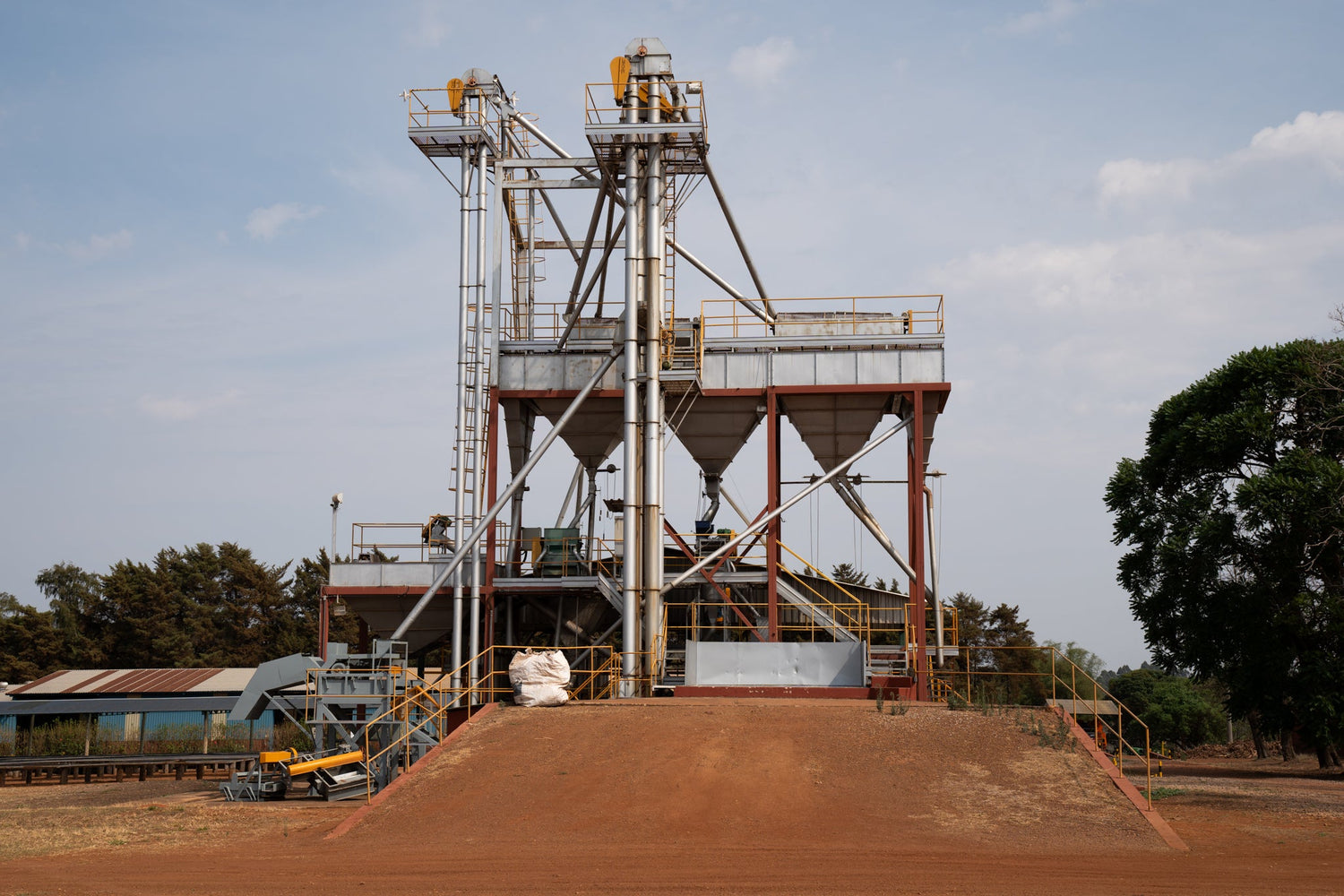By Nicole Ferris
I was lucky enough to visit Guatemala this year and visit our long-time coffee producer partner, the Bressani Family of Finca San Jeronimo. Our relationship with them goes back to 2016 and we were one of the first to buy his specialty coffees through Coffee Bird in the UK. At the time, I thought it was a delightful Guatemalan coffee with some great aspects of social, environmental and economic practices. A great story.
However, upon visiting earlier this year, my expectations were surpassed and many assumptions were blown out of the water. It has profoundly changed the way I think about coffee and what ‘sustainability’ actually is - and isn’t.
I have visited a few coffee farms in my life - others in Guatemala, Costa Rica and Colombia. They were lovely and produce some good, if not great, coffees. Then we went to San Jeronimo and it was a before and after moment - it changed how I think about coffee farms and challenged what I think I know, have read, and to ask questions. Giorgio Bressani, one of the most passionate people I have ever met is a key reason why I would label this farm Best in Show. He spent 2 days talking over every minute detail of the farm, their practices and their values and it still didn’t feel like we scratched the surface.
Our arrival to the farm started with breakfast with his whole family and the managers from each department on the farm. All around the table together, breaking bread or in this case tortilla, drinking fresh juice made from tropical fruits and of course their coffee.

The Finca is based at Volcan de Atitlán, with a river running through it, ranging from 700masl to 2600 masl. Idyllic, lush and beautiful. The beginnings of our tour wound through the village where the pickers live and the children go to school, including it’s very own ‘town square’ and church the main family house and behind it the mill, the cupping lab, the roastery and at one time a bank. We passed their dairy factory (more on this later) and wound our way over a river - not just any old river, but where they power their whole estate with hydropower - so much so that they are completely off the grid.

To ensure that coffee and dairy thrives, the farm is focused on ensuring it is diverse with plants and the nutrients and yeasts that are so important. They have many projects on the go which work to find the most balance.
Fundamentally, Finca San Jeronimo is moving away from decades of the monoculture norm, to doing everything they can to create an ecosystem that is diverse with plants, yeasts and nutrients (outside of the NPK norm) to produce top quality specialty coffees. In a country that has had its coffee production reduced due to changing weather, problems with leaf rust and their costs of production being more than what they sell per kilo.

So here goes, an attempt to articulate something that I am still very much learning. The highlights reel before the next blog.
The highlights reel:
It is organic without certification.
They have dedicated their time and money to experiments for tracking and combatting Bora beetles. Including a fungus which creates a zombie like episode when a bora eats it. The fungus takes over its host’s brain and stuns and controls the bora, and in doing so sends a message to go back to its home where it can infect the other bora ants.
These steps have allowed them to take the brave leap of being fungicide-free, and as a total 180 on that practice of whitewashing all fungus, they now propagate fungus, bacteria and other microbial life in a big ‘compost tea kettle which is then methodically sprayed all over the farm, where leaf rust is most likely to occur.
The compost tea is secondary to a huge compost scheme which makes a product richer than anything they can buy. It aims to break down and make available over 50 trace elements required for the health of the crops and land. A core component of this is cow manure. In the current climate of all dairy farming, they see their animal farming practices as being essential to soil health, allowing them to ‘close the loop’ on how nutrients flow in their farm.
Realising how much soil erosion there was, they decided to ‘cover crop’ between coffee rows with nitrogen-fixing plants. This reduces the ground temperature for up to 36 degrees centigrade(!) and creates a floor ecosystem rich in insect life.
Their soil is volcanic and doesn't carry many nutrients so they need organic matter. Organic matter has a bigger surface area than clay but can erode easily. It takes almost 300 years to make one inch of topsoil but it can wash away in 30 mins of rain if a farm doesn't have good practices.
Preventing soil erosion and casting shade on the coffee is important. All plots have different shade set up - different trends determine what is grown for shade They have hardwoods that take 30 years to grow and when harvest for more than the years of coffee harvest. They also have 5000 yellow flowering trees, Bamboo everywhere where water runs for ground control and of that 10 hectares is also for construction purposes
They have an amazing array of birdlife which has been steadily growing (check out Giorgios Instagram @pajareando.gt), the last 5 years went from seeing 4 species of hummingbirds and 16 species. This is from leaving the cover crop between the rows of coffee trees.
In conclusion:
This has had a profound impact on how we see sustainability in our industry. It has thrown up more questions than answers, but sharing experiences like this is an important part of the journey. This is only the beginning. Watch this space.




